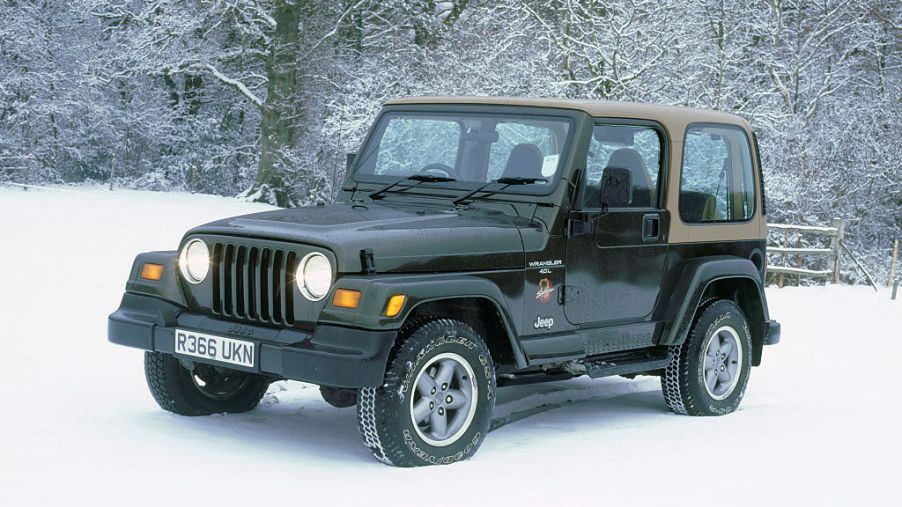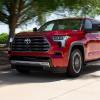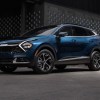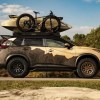
The Rugged History of the Jeep Wrangler
The Jeep Wrangler is one of America’s most iconic vehicles. The Wrangler has strong, patriotic ties. Not to mention, it is one of the few vehicles that has been in continuous production.
It has gone through a variety of changes through the years and is currently in its fourth generation of production. Let’s take a look back at how the Jeep Wrangler got its impressive start, how it stole the hearts of people all over the world, and how the Wrangler uses its past to lead it into the future.
The Jeep Wrangler: where it all began
The name Wrangler didn’t come until much later, but the Jeep Wrangler’s ancestry can be traced all the way back to the first Jeep vehicles. According to the Road Show by CNET, the iconic Jeep vehicle was first created when the U.S. military hired company Willys-Overland to design and build a functional, off-roading military vehicle.
This need for a vehicle was paramount, as the country entered World War II. Between the years 1941 and 1945, Willys-Overland made “MA” and “MB” vehicles that would come to change the game forever.
There are many theories on where the name “Jeep” came from. In true, iconic style, Willys military vehicles became simply known as “Jeeps.” According to CJ Pony Parts, the most commonly agreed-upon theory is that the name came from a character in the comic Popeye, who would “go anywhere and do anything.” And it is from these first Jeeps that the Wrangler was born. Once the war was over, the company knew it would have to switch gears to a civilian market.
Though the official Wrangler name wasn’t used until 1986, it is based on all previous Jeep models, including its first military ancestors. The first civilian Jeeps that came from Willys were known as the “CJ,” or “civilian Jeep.”
It hit the market in May of 1944 when victory in the war was imminent. The CJ kept the same memorable, wartime “Jeep” frame, but added a tailgate and canvas top. It shocked customers with its vibrant color options, including Emerald Green, Potomac Gray, Picket Gray, Michigan Yellow, or Normandy Blue. The CJ model’s entire design, inside and out, was meant to celebrate post-war America.
And though it’s gone through some changes, the same military vehicle that stormed the beaches in World War II is the same one that’s been capturing hearts for decades. Incredibly, the CJ remained largely unchanged from 1945 until 1986.
The journey of the Wrangler name
The Jeep Wrangler YJ made its first debut in 1986 at the Chicago Auto Show. But the name Wrangler only came from a marketing strategy that worked. In 1980, a controversy started to surround the CJ model regarding flip-overs. It resulted in a lawsuit which made the company rethink how it would move forward with the CJ. Thus, the Jeep Wrangler was born.
When the Jeep Wrangler YJ first debuted, it had a completely different face than the CJ model. According to U.S. News, it had rectangular headlights, but the same separate body and frame that made those CJs so popular. Its interior and suspension took nods from the Jeep Cherokee. This meant it was more comfortable than the CJ model before it. It also handled better and had anti-roll bars added in for additional safety.
This new Jeep Wrangler completely changed the function of its predecessor, from just a weekend off-roader to a vehicle you could take to the office as well. It was ideally designed to be comfortable enough for daily driving, but also capable enough to go on any adventure. Even with a failed lawsuit from Wrangler Jeans, the Jeep Wrangler skyrocketed in popularity.
How the Jeep Wrangler changed through the years
There were no major changes to the first Jeep Wrangler until after 1996 when the last “YJ” was produced. Only a few changes were made before that, like increased horsepower and torque in 1991 and the introduction of anti-lock brakes in 1993. The Wrangler YJ also offered its first automatic transmission in 1994, converting even more people into Jeep lovers.
The second-generation Wrangler TJ was the vehicle’s first major change. According to Jeep, the Wrangler TJ debuted in 1997, with increased stiffness in the body and frame, and an all-important switch to coil-springs. It also returned to its original round headlights and was designed to be more of a daily driver than ever before. It came with the same engine choices as the YJ models, still retaining the same charm and popularity.
The Wrangler’s next major redesign came for the 2007 model year when the Wrangler debuted its option for a four-door for the first time. Known as the Wrangler JK, the third-generation Wrangler offered increased safety with traction and stability control.
It also had the roll bars, removable doors, fold-down windshield, and soft-top options that heralded it back to its wartime days. According to MotorTrend, the Wrangler JK had everything possible to make it an off-road vehicle.
In 2018, Jeep unveiled its third-generation Wrangler JL, which is still in production today. The redesign improved the Wrangler’s presence on the road, without sacrificing any performance off of it. The design is reminiscent of the old, military Jeeps from World War II, with both automatic and manual transmission choices. The Wrangler continues to add comfort and convenience with every redesign.
The Jeep Wrangler has remained popular since it made its debut decades ago. Even when the economy crashes, even with a lack of fuel economy, the Jeep Wrangler remains one of the most iconic and popular vehicles in the country.


